Introduction
In the 36 peer-reviewed scientific studies quoted below, researchers found that liberals and conservatives have different brain structures and different physiological and psychological responses to stimuli. They also activate different neural mechanisms when confronted with similar situations.
Fifteen studies indicate a physiological difference between conservatives and liberals, and 21 studies indicate a psychological difference. We found one study that refutes the findings of a study that found physiological differences between liberals and conservatives.
15 Studies Showing Physiological Differences
1. Liberals and conservatives have noticeable and discriminative differences in functional connectivity in the brain.
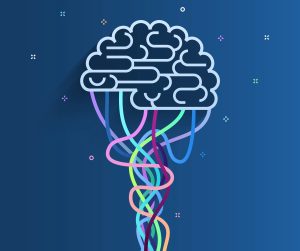
“Emerging research has begun investigating the neural underpinnings of the biological and psychological differences that drive political ideology, attitudes, and actions. Here, we explore the neurological roots of politics through conducting a large sample, whole-brain analysis of functional connectivity (FC) across common fMRI tasks. Using convolutional neural networks, we develop predictive models of ideology using FC from fMRI scans for nine standard task-based settings in a novel cohort of healthy adults … Our analyses suggest that liberals and conservatives have noticeable and discriminative differences in FC that can be identified with high accuracy using contemporary artificial intelligence methods and that such analyses complement contemporary models relying on socio-economic and survey-based responses. FC signatures from retrieval, empathy, and monetary reward tasks are identified as important and powerful predictors of conservatism, and activations of the amygdala, inferior frontal gyrus, and hippocampus are most strongly associated with political affiliation. Although the direction of causality is unclear, this study suggests that the biological and neurological roots of political behavior run much deeper than previously thought.”Seo Eun Yang, et al., “Functional Connectivity Signatures of Political Ideology,” PNAS Nexus, Volume 1, Issue 3, July 2022, https://academic.oup.com/pnasnexus/article/1/3/pgac066/6590843
2. The brain responses of liberals and conservatives differ when watching the same political video footage.

“Political partisans view the world through a biased lens, but little is known about how these biased perceptions of reality arise. We measured the brain activity of committed partisans watching real political video footage. Although all participants viewed the same videos, brain responses diverged between liberals and conservatives, reflecting differences in the subjective interpretation of the footage. This polarized perception was exacerbated by a personality trait: intolerance of uncertainty. Participants less tolerant to uncertainty in daily life had more ideologically polarized brain responses than those who tolerate uncertainty. This was observed on both sides of the ideological aisle. This suggests that aversion to uncertainty governs how the brain processes political information to form black-and-white interpretations of inflammatory political content.”Jeroen M. van Baar, et al., “Intolerance of Uncertainty Modulates Brain-to-Brain Synchrony During Politically Polarized Perception,” Proceedings of the National Academy of Sciences, 118, 20, May 13, 2021, https://www.pnas.org/doi/10.1073/pnas.2022491118
3. Further evidence that the brain responses of liberals and conservatives differ when watching the same political video footage.

“Partisan biases in processing political information contribute to rising divisions in society. How do such biases arise in the brain? We measured the neural activity of participants watching videos related to immigration policy. Despite watching the same videos, conservative and liberal participants exhibited divergent neural responses. This ‘neural polarization’ between groups occurred in a brain area associated with the interpretation of narrative content and intensified in response to language associated with risk, emotion, and morality. Furthermore, polarized neural responses predicted attitude change in response to the videos. These findings suggest that biased processing in the brain drives divergent interpretations of political information and subsequent attitude polarization.”Yuan Chang Leong, et al., “Conservative and Liberal Attitudes Drive Polarized Neural Responses To Political Content,” Proceedings of the National Academy of Sciences, October 20, 2020, https://www.pnas.org/doi/10.1073/pnas.2008530117
4. Conservatives have greater psychological resilience attributable to greater impulse control and causal reasoning.

“We investigated whether conservatives have greater resilience and self-regulation capacity, which are suggested to be psychological buffers that enhance psychological well-being, than liberals and moderates. We also explored associations between intrinsic functional brain organization and these psychological resources to expand our neurobiological understanding of self-regulatory processes in neuropolitics. We found that conservatives, compared to liberals and moderates, had greater psychological resilience and self-regulation capacity that were attributable to greater impulse control and causal reasoning. Stronger intrinsic connectivities between the orbitofrontal cortex (OFC) and precuneus and between the insula and frontal pole/OFC in conservatives were correlated with greater resilience and self-regulation capacity. These results suggest the neural underpinnings that may allow conservatives to manage the psychological stress and achieve greater life satisfaction. This study provides neuroscientific evidence for the different responses of liberals and conservatives to politically relevant social issues.”Taekwan Kim, et, al, “Intrinsic Functional Connectivity of Blue and Red Brains: Neurobiological Evidence of Different Stress Resilience Between Political Attitudes,” Scientific Reports, 10, September 28, 2020, https://www.nature.com/articles/s41598-020-72980-x
5. Brain responses to a disgusting image are sufficient to make accurate predictions about an individual’s political ideology.

“Fundamental features of political ideology have been found to be deeply connected to basic biological mechanisms that may serve to defend against environmental challenges like contamination and physical threat. … We applied a machine-learning method to fMRI data to test the hypotheses that brain responses to emotionally evocative images predict individual scores on a standard political ideology assay. Disgusting images, especially those related to animal-reminder disgust (e.g., mutilated body [also sliced hand, open chest, etc.]), generate neural responses that are highly predictive of political orientation even though these neural predictors do not agree with participants’ conscious rating of the stimuli. … Remarkably, brain responses to a single disgusting stimulus were sufficient to make accurate predictions about an individual subject’s political ideology. These results provide strong support for the idea that fundamental neural processing differences that emerge under the challenge of emotionally evocative stimuli may serve to structure political beliefs in ways formerly unappreciated.”Woo-Young Ahn, et al., “Nonpolitical Images Evoke Neural Predictors of Political Ideology,” Current Biology, November 17, 2014, https://www.ncbi.nlm.nih.gov/pmc/articles/PMC4245707/
6. Neurocognitive responses to conflict differ among the children of liberals, moderates, and conservatives.

“Given recent evidence that political ideology is associated with neural responses to cognitive conflict in adults, we tested the exploratory hypothesis that children’s neurocognitive responses to conflict may also differ depending on their parents’ ideology.We assessed relations between parental political ideology and children’s neurocognitive responses to conflict. … Because previous research documents heightened liberal-conservative differences in threat-relevant contexts, each trial of the task was preceded by an angry face (threat-relevant) or comparison face (happy or neutral).An effect of parental ideology on the conflict-related N2 [a measure of electrical activity of the brain surface] emerged in the threat condition, such that the N2 was larger among children of liberals compared with children of moderates and conservatives. These findings suggest that individual differences in neurocognitive responses to conflict, heightened in the context of threat, may reflect a more general pattern of individual differences that, in adults, relates to political ideology.”Tracy A. Dennis, David M. Amodio, and Laura J. O’Toole, “Associations between Parental Ideology and Neural Sensitivity to Cognitive Conflict in Children,” Social Neuroscience, October 16, 2014, https://pubmed.ncbi.nlm.nih.gov/25319060/
7. Compared with liberals, conservatives tend to have stronger physiological responses to negative environmental stimuli.

“A rapidly growing body of empirical evidence documents a multitude of ways in which liberals and conservatives differ from each other in purviews of life with little direct connection to politics, from tastes in art to desire for closure and from disgust sensitivity to the tendency to pursue new information, but the central theme of the differences is a matter of debate. In this article, we argue that one organizing element of the many differences between liberals and conservatives is the nature of their physiological and psychological responses to features of the environment that are negative.Compared with liberals, conservatives tend to register greater physiological responses to such stimuli and also to devote more psychological resources to them. … We conclude with a discussion of normative implications, stressing that identifying differences across ideological groups is not tantamount to declaring one ideology superior to another.”John R. Hibbing, Kevin B. Smith, and John R. Alford, “Differences in Negativity Bias Underlie Variations in Political Ideology,” Behavioral and Brain Sciences, June 2014, https://www.cambridge.org/core/journals/behavioral-and-brain-sciences/article/differences-in-negativity-bias-underlie-variations-in-political-ideology/72A29464D2FD037B03F7485616929560
8. During risk-taking behavior, liberals have significantly greater brain activity in the left insula area, while conservatives have significantly greater brain activity in the right amygdala.

“Liberals and conservatives exhibit different cognitive styles and converging lines of evidence suggest that biology influences differences in their political attitudes and beliefs. … Here, we explore differences in brain function in liberals and conservatives by matching publicly-available voter records to 82 subjects who performed a risk-taking task during functional imaging. Although the risk-taking behavior of Democrats (liberals) and Republicans (conservatives) did not differ, their brain activity did. Democrats showed significantly greater activity in the left insula, while Republicans showed significantly greater activity in the right amygdala.In fact, a two parameter model of partisanship based on amygdala and insula activations yields a better fitting model of partisanship than a well-established model based on parental socialization of party identification long thought to be one of the core findings of political science.These results suggest that liberals and conservatives engage different cognitive processes when they think about risk, and they support recent evidence that conservatives show greater sensitivity to threatening stimuli.”Darren Schreiber, et al., “Red Brain, Blue Brain: Evaluative Processes Differ in Democrats and Republicans,” PLoS ONE, February 2013, https://journals.plos.org/plosone/article?id=10.1371/journal.pone.0052970
9. People right-of-center politically spend more time looking at unpleasant images, and people left-of-center politically spend more time looking at pleasant images.

“We report evidence that individual-level variation in people’s physiological and attentional responses to aversive and appetitive stimuli are correlated with broad political orientations. Specifically, we find that greater orientation to aversive stimuli tends to be associated with right-of-centre and greater orientation to appetitive (pleasing) stimuli with left-of-centre political inclinations. … Political orientations tending towards the right of the spectrum are associated with both faster orienting towards, and greater total time spent attending to, aversive relative to appetitive images whereas the opposite is true for participants on the left of the ideological spectrum. …Our core finding is that, compared with individuals on the political left, individuals on the right direct more of their attention to the aversive despite displaying greater physiological responsiveness to those stimuli.”Michael D. Dodd, et al., “The Left Rolls with the Good; The Right Confronts the Bad. Physiology and Cognition in Politics,” Philosophical Transactions of the Royal Society B: Biological Sciences, March 5, 2012
10. People who react strongly to disgusting images, such as a picture of someone eating worms, are more likely to self-identify as conservative.

“People who believe they would be bothered by a range of hypothetical disgusting situations display an increased likelihood of displaying right-of-center rather than left-of-center political orientations. … In this article, we demonstrate that individuals with marked involuntary physiological responses to disgusting images [measured by change in mean skin conductance], such as of a man eating a large mouthful of writhing worms, are more likely to self-identify as conservative and, especially, to oppose gay marriage than are individuals with more muted physiological responses to the same images.”Kevin B. Smith, et al., “Disgust Sensitivity and the Neurophysiology of Left-Right Political Orientations,” PLOS ONE, October 19, 2011, https://journals.plos.org/plosone/article?id=10.1371/journal.pone.0025552
11. Liberals have more tolerance to uncertainty (bigger anterior cingulate cortex), and conservatives have more sensitivity to fear (bigger right amygdala).

“In a large sample of young adults, we related self-reported political attitudes to gray matter volume using structural MRI [magnetic resonance imaging]. We found that greater liberalism was associated with increased gray matter volume in the anterior cingulate cortex, whereas greater conservatism was associated with increased volume of the right amygdala. … Our findings are consistent with the proposal that political orientation is associated with psychological processes for managing fear and uncertainty. The amygdala has many functions, including fear processing. Individuals with a larger amygdala are more sensitive to fear, which, taken together with our findings, might suggest the testable hypothesis that individuals with larger amygdala are more inclined to integrate conservative views into their belief systems. … our finding of an association between anterior cingulate cortex [ACC] may be linked with tolerance to uncertainty. One of the functions of the anterior cingulate cortex is to monitor uncertainty and conflicts. Thus it is conceivable that individuals with a larger ACC have a higher capacity to tolerate uncertainty and conflicts, allowing them to accept more liberal views.”Ryota Kanai, et al., “Political Orientations Are Correlated with Brain Structure in Young Adults,” Current Biology, April 7, 2011, https://www.ncbi.nlm.nih.gov/pmc/articles/PMC3092984/
12. Conservatives have more activity in their dorsolateral prefrontal cortices, the part of the brain that activates for complex social evaluations.
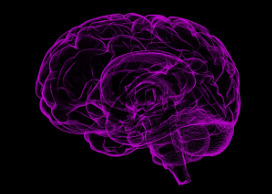
“The conservatism dimension, which corresponds to the liberal-to-conservative criterion, was associated with activity in the right DLPFC [dorsolateral prefrontal cortex]. …In this study, we speculate that activity in the DLPFC may reflect a role of this region in deliberative decision-making in complex social evaluations. … The observation that this region was increasingly activated by conservative beliefs could be explained by claiming that conservative statements require more complex social judgments marked by greater cognitive dissonance between self-interest and sense of fairness. … We showed that the representation of complex political beliefs relies on three fundamental dimensions, each reflected in distinctive patterns of neural activation: The degree of individualism of political beliefs was linearly associated with activation in the medial PFC [prefrontal cortex] and TPJ [temporoparietal junction], the degree of conservatism with activation in the DLPFC, and the degree of radicalism with activation in the ventral striatum and PC/P [posterior cingulate/precuneus].Our findings support the interpretation that the political belief system depends on a set of social cognitive processes including those that enable a person to judge themselves and other people, make decisions in ambivalent social situations, and comprehend motivational and emotional states.”Giovanna Zamboni, et al., “Individualism, Conservatism, and Radicalism As Criteria for Processing Political Beliefs: A Parametric fMRI Study,” Social Neuroscience, September 2009, https://pubmed.ncbi.nlm.nih.gov/19562629/
13. Genetics influence political attitudes during early adulthood and beyond.
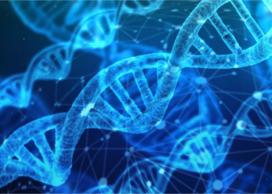
“The present research attempts to characterize how the transmission of political orientations develops over the life course. … Genetic influences on political attitudes are absent prior to young adulthood. During childhood and adolescence, individual differences in political attitudes are accounted for by a variety of environmental influences. … However, at the point of early adulthood (in the early 20s), for those who left their parental home, there is evidence of a sizeable genetic influence on political attitudes which remains stable throughout adult life.”Peter K. Hatemi, et al., “Genetic and Environmental Transmission of Political Attitudes Over a Life Time,” The Journal of Politics, July 21, 2009, https://www.journals.uchicago.edu/doi/abs/10.1017/S0022381609090938?journalCode=jop
14. Individual political attitudes correlate with physiological traits, such as sensitivity to sudden noises and threatening visual images.

“We present evidence that variations in political attitudes correlate with physiological traits. … In a group of 46 adult participants with strong political beliefs, individuals with measurably lower physical sensitivities to sudden noises and threatening visual images were more likely to support foreign aid, liberal immigration policies, pacifism, and gun control, whereas individuals displaying measurably higher physiological reactions to those same stimuli were more likely to favor defense spending, capital punishment, patriotism, and the Iraq War. Thus, the degree to which individuals are physiologically responsive to threat appears to indicate the degree to which they advocate policies that protect the existing social structure from both external (outgroup) and internal (norm-violator) threats. … We do not label these collections of policy positions as either ‘liberal’ or ‘conservative’ because we measure only one aspect of ideologies and exclude other aspects such as positions on economic issues. We take no stance on whether these positions actually promote the stability and cohesion of the social unit; we only assert that, given the common frames of the modern American policy, those most concerned about social protection will tend to be attracted to the particular policy positions listed.”Douglas R. Oxley, et al., “Political Attitudes Vary with Physiological Traits,” Science, September 19, 2008, https://pubmed.ncbi.nlm.nih.gov/18801995/
Editor’s note: In 2020, researchers from universities in the Netherlands and the United States replicated Oxley’s and his team’s study and concluded that: “Our analyses do not support the conclusions of the original study, nor do we find evidence for broader claims regarding the effect of disgust and the existence of a physiological trait. Rather than studying unconscious responses as the ‘real’ predispositions, alignment between conscious and unconscious responses promise deeper insights in the emotional roots of ideology.” Bert N. Bakker, et al., “Conservatives and Liberals Have Similar Physiological Responses to Threats,” Nature Human Behaviour, 4, February 10, 2020, https://www.nature.com/articles/s41562-020-0823-z
15. When faced with a conflict, liberals are more likely than conservatives to alter their habitual response when cues indicate it is necessary.

“[We] found that greater liberalism was associated with stronger conflict-related anterior cingulate activity, suggesting greater neurocognitive sensitivity to cues for altering a habitual response pattern. … Our results are consistent with the view that political orientation, in part, reflects individual differences in the functioning of a general mechanism related to cognitive control and self-regulation. Stronger conservatism (versus liberalism) was associated with less neurocognitive sensitivity to response conflicts. At the behavioral level, conservatives were also more likely to make errors of commission. Although a liberal orientation was associated with better performance on the response-inhibition task examined here, conservatives would presumably perform better on tasks in which a more fixed response style is optimal.”David M. Amodio, et al., “Neurocognitive Correlates of Liberalism and Conservatism,” Nature Neuroscience, September 9, 2007, https://www.nature.com/articles/nn1979
21 Studies Showing Psychological Differences
1. Conservatives are worse at distinguishing truths and falsehoods than liberals.
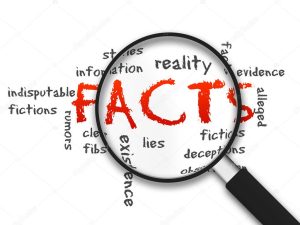
“The idea that U.S. conservatives are uniquely likely to hold misperceptions is widespread but has not been systematically assessed. … We generated an unique longitudinal dataset combining social media engagement data and a 12-wave panel study of Americans’ political knowledge about high-profile news over 6 months. Results confirm that conservatives have lower sensitivity than liberals, performing worse at distinguishing truths and falsehoods. This is partially explained by the fact that the most widely shared falsehoods tend to promote conservative positions, while corresponding truths typically favor liberals. The problem is exacerbated by liberals’ tendency to experience bigger improvements in sensitivity than conservatives as the proportion of partisan news increases. These results underscore the importance of reducing the supply of right-leaning misinformation.”R. Kelly Garrett and Robert M. Bond, “Conservatives’ Susceptibility to Political Misconceptions,” Science Advances, Volume 7, Issue 23, June 2, 2021, https://www.science.org/doi/10.1126/sciadv.abf1234
2. Liberals are more likely to be less biased against, and see less of a perceived threat from immigrants than conservatives.

“We used two versions of the moral foundations questionnaire with the target group being either abstract or specific ingroups or outgroups. Across three studies, we observed that liberals showed more endorsement of Individualizing foundations (Harm and Fairness foundations) with an outgroup target, while conservatives showed more endorsement of Binding foundations (Loyalty, Authority, and Purity foundations) with an ingroup target. This general pattern was found when the framed, target-group was abstract (i.e., ‘ingroups’ and ‘outgroups’ in Study 1) and when target groups were specified about a general British-ingroup and an immigrant-outgroup (Studies 2 and 3). In Studies 2 and 3, both Individualizing-Ingroup Preference and Binding-Ingroup Preference scores predicted more Attitude Bias and more Negative Attitude Bias toward immigrants (Studies 2 and 3), more Implicit Bias (Study 3), and more Perceived Threat from immigrants (Studies 2 and 3). We also demonstrated that increasing liberalism was associated with less Attitude Bias and less Negative Bias toward immigrants (Studies 2 and 3), less Implicit Bias (Study 3), and less Perceived Threat from immigrants (Studies 2 and 3).”Brandon D. Stewart and David S. M. Morris, “Moving Morality Beyond the In-Group: Liberals and Conservatives Show Differences on Group-Framed Moral Foundations and These Differences Mediate the Relationships to Perceived Bias and Threat,” Frontiers in Psychology, April 21, 2021, https://www.frontiersin.org/articles/10.3389/fpsyg.2021.579908/full
3. Conservatives, compared to liberals, see scientific and non-scientific viewpoints as closer in legitimacy.

“Two studies examined how political ideology relates to attitudes towards opposing scientific and nonscientific perspectives on apolitical topics. Participants read an article excerpt containing quotes from a researcher debunking a common misconception, such as the existence of lucky streaks in games of chance. They also read the perspective of someone who rejected the researcher in favor of personal experience, either in the form of a quote in the article from a relevant professional (e.g., a casino manager, Study 1) or a comment from a purported previous respondent with no clear expertise (Study 2). In both studies, conservatives, compared to liberals, evaluated the views of the scientist and the person rejecting the science as closer in legitimacy. Differences in evaluation of the science rejecter were mediated by conservatives’ heightened intuitive thinking. By spotlighting how partisans evaluate nonscientific perspectives alongside science and by focusing on apolitical topics, these results bring new clarity to the debate on whether conservatives are more biased than liberals in attitudes towards science.”Randy Stein, et al., “Hearing From Both Sides: Differences Between Liberal and Conservative Attitudes Toward Scientific and Experiential Evidence,” Political Psychology, October 27, 2020, https://onlinelibrary.wiley.com/doi/abs/10.1111/pops.12706
4. Liberals show greater cognitive flexibility than conservatives, meaning they have a greater ability to appropriately and efficiently adjust their behavior according to a changing environment.

“The present research proposes that conservatives and liberals excel at tasks of distinct working memory processes (i.e., inhibition and updating, respectively). Consistent with this hypothesis, three studies demonstrate that conservatives are more likely to succeed at response inhibition and liberals are more likely to succeed at response updating. Moreover, this effect is rooted in different levels of cognitive flexibility and independent of respondents’ demographics, intelligence, religiosity, and motivation. Collectively, these findings offer an important perspective on the cognitive factors that delineate conservatism and liberalism, the role of cognitive flexibility in specific working memory processes, and the impact of political ideology on a multitude of behaviors linked to inhibition and updating (e.g., creativity, problem-solving, self-control).”Bryan M. Buechner, et al., “Political Ideology and Executive Functioning: The Effect of Conservatism and Liberalism on Cognitive Flexibility and Working Memory Performance,” Social Psychological and Personality Science, April 10, 2020, https://journals.sagepub.com/doi/abs/10.1177/1948550620913187
5. Conservatives report greater meaning and purpose in life than liberals.
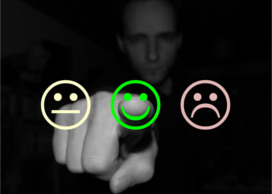
“Conservatives report greater life satisfaction than liberals, but this relationship is relatively weak. To date, the evidence is limited to a narrow set of well-being measures that ask participants for a single assessment of their life in general. We address this shortcoming by examining the relationship between political orientation and well-being using measures of life satisfaction, affect, and meaning and purpose in life. Participants completed well-being measures after reflecting on their whole life (Studies 1a, 1b, and 2), at the end of their day (Study 3), and in the present moment (Study 4). Across five studies, conservatives reported greater meaning and purpose in life than liberals at each reporting period. This finding remained significant after adjusting for religiosity and was usually stronger than the relationships involving other well-being measures. Finally, meaning in life was more closely related to social conservatism than economic conservatism.”David B. Newman, et al., “Conservatives Report Greater Meaning in Life Than Liberals,” Social Psychological and Personality Science, June 15, 2018, https://www.ncbi.nlm.nih.gov/pmc/articles/PMC6764755/
6. In moral judgments, conservatives emphasize value of actions, while liberals emphasize value of expected outcome.

“Conservatives and liberals disagree sharply on matters of morality and public policy. We propose a novel account of the psychological basis of these differences. Specifically, we find that conservatives tend to emphasize the intrinsic value of actions during moral judgment, in part by mentally simulating themselves performing those actions, while liberals instead emphasize the value of the expected outcomes of the action. We then demonstrate that a structural emphasis on actions is linked to the condemnation of victimless crimes, a distinctive feature of conservative morality. Next, we find that the conservative and liberal structural approaches to moral judgment are associated with their corresponding patterns of reliance on distinct moral foundations. In addition, the structural approach uniquely predicts that conservatives will be more opposed to harm in circumstances like the well known trolley problem, a result which we replicate. Finally, we show that the structural approaches of conservatives and liberals are partly linked to underlying cognitive styles (intuitive versus deliberative). Collectively, these findings forge a link between two important yet previously independent lines of research in political psychology: cognitive style and moral foundations theory.”Inar R. Hannikainen, Ryan M. Miller, and Fiery A. Cushman, “Act Versus Impact: Conservatives and Liberals Exhibit Different Structural Emphases in Moral Judgment,” Ratio, May 2017, https://papers.ssrn.com/sol3/papers.cfm?abstract_id=2727363
7. Conservatives give more weight to negative information than positive information, compared with liberals.
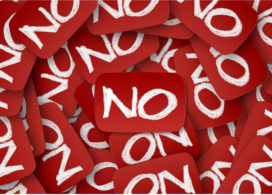
“Recent research revealed that political conservatives and liberals differ in the processing of valenced information. In particular, conservatives (vs. liberals) tend to weigh negative information more than positive information in their perception of the physical and social world. In the present work, we further investigated the ideology-based asymmetries in the processing of negative and positive information examining both the attention-grabbing power of negative information and the trajectories of the movements performed by respondents when required to categorize positive and negative stimuli. To this end we employed a modified version of the Mouse-Tracking procedure (Freeman & Ambady, 2010), recording hand movements during the execution of categorization tasks. Results showed that conservatives were indeed slower to start and execute response actions to negative stimuli, and, more specifically, the trajectories of their movements signaled avoidance tendencies aimed at increasing the distance from negative stimuli. In addition, this pattern of findings emerged both when participants were asked to categorize the stimuli according to their valence and when the same stimuli had to be categorized on the basis of irrelevant perceptual features. Overall, results demonstrate that conservatives and liberals process valenced information differently, perform different spontaneous movements when exposed to them, and that such asymmetries are largely independent from current processing goals.”Luciana Carraro, Luigi Castelli, and Paolo Negri, “The Hand in Motion of Liberals and Conservatives Reveals the Differential Processing of Positive and Negative Information,” Acta Psychologica, July 2016, https://www.sciencedirect.com/science/article/abs/pii/S0001691816300725
8. Liberals solve problems more via insight than step-by-step analysis.

“Previous studies showed that liberals and conservatives differ in cognitive style. Liberals are more flexible, and tolerant of complexity and novelty, whereas conservatives are more rigid, are more resistant to change, and prefer clear answers. We administered a set of compound remote associate problems, a task extensively used to differentiate problem-solving styles (via insight or analysis). Using this task, several researches have proven that self-reports, which differentiate between insight and analytic problem-solving, are reliable and are associated with two different neural circuits. In our research we found that participants self-identifying with distinct political orientations demonstrated differences in problem-solving strategy. Liberals solved significantly more problems via insight instead of in a step-by-step analytic fashion. Our findings extend previous observations that self-identified political orientations reflect differences in cognitive styles. More specifically, we show that type of political orientation is associated with problem-solving strategy. The data converge with previous neurobehavioural and cognitive studies indicating a link between cognitive style and the psychological mechanisms that mediate political beliefs.”Carola Salvi, et al., “The Politics of Insight,” Quarterly Journal of Experimental Psychology, June 2016, https://www.researchgate.net/publication/292077508_The_Politics_of_Insight
9. Conservatives are more likely to remember a negative scene than liberals.

“Variation in political ideology has been linked to differences in attention to and processing of emotional stimuli, with stronger responses to negative versus positive stimuli (negativity bias) the more politically conservative one is. As memory is enhanced by attention, such findings predict that memory for negative versus positive stimuli should similarly be enhanced the more conservative one is. The present study tests this prediction by having participants study 120 positive, negative, and neutral scenes in preparation for a subsequent memory test. On the memory test, the same 120 scenes were presented along with 120 new scenes and participants were to respond whether a scene was old or new. Results on the memory test showed that negative scenes were more likely to be remembered than positive scenes, though, this was true only for political conservatives. That is, a larger negativity bias was found the more conservative one was. The effect was sizeable, explaining 45% of the variance across subjects in the effect of emotion. These findings demonstrate that the relationship between political ideology and asymmetries in emotion processing extend to memory and, furthermore, suggest that exploring the extent to which subject variation in interactions among emotion, attention, and memory is predicted by conservatism may provide new insights into theories of political ideology.”Mark Mills, et al., “Political Conservatism Predicts Asymmetries in Emotional Scene Memory,” Behavioural Brain Research, June 1, 2016, https://pubmed.ncbi.nlm.nih.gov/26992825/
10. Liberals focus on the future more than the past, while conservatives focus on the past more than the future.

“Conservatives are thought to favor certainty and value tradition (suggesting a focus on the past), whereas liberals are thought to favor change (suggesting a focus on the future), even when it is associated with some degree of uncertainty. On this basis, two studies contrasted references to the past versus the future in language usage. Study 1 analyzed 600 texts from conservative and liberal websites. After adjusting for normative differences, a cross-over interaction was obtained: Conservative posts referenced the past to a greater extent than the future and liberal posts referenced the future more than the past. A conceptually parallel cross-over interaction was obtained in Study 2, which analyzed 145 State of the Union addresses. The temporal orientation of conservatives and liberals, then, appears qualitatively different.”Michael D. Robinson, et al., “The Politics of Time: Conservatives Differentially Reference the Past and Liberals Differentially Reference the Future,” Journal of Applied Psychology, March 4, 2015, https://onlinelibrary.wiley.com/doi/abs/10.1111/jasp.12306
11. Liberals and conservatives perceive the world differently.

“A prominent model suggests that individuals to the right of the political spectrum are more cognitively rigid and less tolerant of ambiguity than individuals to the left. On the basis of this model, we predicted that a psychological mechanism linked to the resolution of visual ambiguity – perceptual bias – would be linked to political attitude. Perceptual bias causes western individuals to favour a global interpretation when scrutinizing ambiguous hierarchical displays (e.g., alignment of trees) that can be perceived either in terms of their local elements (e.g., several trees) or in terms of their global structure (e.g., a forest). Using three tasks (based on Navon-like hierarchical figures or on the Ebbinghaus illusion), we demonstrate (1) that right-oriented Westerners present a stronger bias towards global perception than left-oriented Westerners and (2) that this stronger bias is linked to higher cognitive rigidity. This study establishes for the first time that political ideology, a high-level construct, is directly reflected in low-level perception. Right- and left-oriented individuals actually see the world differently.”Serge Caparos, et al., “The Tree to the Left, the Forest to the Right: Political Attitude and Perceptual Bias,” Cognition, January 2015, https://www.sciencedirect.com/science/article/abs/pii/S0010027714002066
12. Liberals think more analytically than moderates and conservatives, and thinking analytically causes people to form more liberal opinions.

“Henrich, Heine, and Norenzayan summarized cultural differences in psychology and argued that people from one particular culture are outliers: people from societies that are Western, educated, industrialized, rich, and democratic (WEIRD). This study shows that liberals think WEIRDer than conservatives. In five studies with more than 5,000 participants, we found that liberals think more analytically (an element of WEIRD thought) than moderates and conservatives. Study 3 replicates this finding in the very different political culture of China, although it held only for people in more modernized urban centers. These results suggest that liberals and conservatives in the same country think as if they were from different cultures. Studies 4 to 5 show that briefly training people to think analytically causes them to form more liberal opinions, whereas training them to think holistically causes shifts to more conservative opinions.”Thomas Talhelm, et al., “Liberals Think More Analytically (More ‘WEIRD’) Than Conservatives,” Personality and Social Psychology Bulletin, December 24, 2014, https://journals.sagepub.com/doi/abs/10.1177/0146167214563672
13. Reliance on quick, efficient, and “low effort” thought processes yields conservative ideologies, while effortful and deliberate reasoning yields liberal ideologies.

“Political conservatism is promoted when people rely on low-effort thinking. When effortful, deliberate responding is disrupted or disengaged, thought processes become quick and efficient; these conditions promote conservative ideology … low-effort thought might promote political conservatism because its concepts are easier to process, and processing fluency increases attitude endorsement.Four studies support our assertion that low-effort thinking promotes political conservatism. … Our findings suggest that conservative ways of thinking are basic, normal, and perhaps natural.”Scott Eidelman, et al., “Low-Effort Thought Promotes Political Conservatism,” Society for Personality and Social Psychology, 2012, https://pubmed.ncbi.nlm.nih.gov/22427384/
14. Conservatives have stronger motivations than liberals to preserve purity and cleanliness.

“Reminders of physical purity influence specific moral judgments regarding behaviors in the sexual domain as well as broad political attitudes. … Environmental reminders of physical cleanliness shifted participants’ attitudes toward the conservative end of the political spectrum and altered their specific attitudes toward various moral acts. … Conservatives show a stronger tendency than liberals to feel disgust and find specific violations of sexual purity more offensive. … When taken together, these two sets of results point to the possibility that political orientation may be, in some measure, shaped by the strength of an individual’s motivation to avoid physical contamination and that resulting vigilance for threats to purity may serve to reinforce a politically conservative stance toward the world.”Erik G. Helzer and David A. Pizarro, “Dirty Liberals! Reminders of Physical Cleanliness Influence Moral and Political Attitudes,” Psychological Science, March 18, 2011, https://pubmed.ncbi.nlm.nih.gov/21421934/
15. Liberals are more likely than conservatives to shift their attention in the direction of another person’s gaze.

“In the present study, we examine whether gaze cue effects [shifting ones attention in the direction of another’s gaze] are moderated by political temperament, given that those on the political right tend to be more supportive of individualism—and less likely to be influenced by others—than those on the left. We find standard gaze cuing effects across all subjects, but systematic differences in these effects by political temperament. Liberals exhibit a very large gaze cuing effect while conservatives show no such effect at various SOAs [stimulus onset asynchrony]. … Perhaps conservatives are less likely to trust others meaning that they are also less likely to trust a gaze cue.”Michael D. Dodd, John R. Hibbing, and Kevin B. Smith, “The Politics of Attention: Gaze Cuing Effects Are Moderated by Political Temperament,” Attention, Perception & Psychophysics, January 2011, https://link.springer.com/article/10.3758/s13414-010-0001-x
16. Republicans are more likely than Democrats to interpret faces as threatening and expressing dominant emotions, while Democrats show greater emotional distress and lower life satisfaction.

“Independent sample t-tests revealed group differences in the averaged threat interpretation scores of the 10 facial stimuli. Republican sympathizers were more likely to interpret the faces as signaling a threatening expression as compared to Democrat sympathizers. Group differences were also found for dominance perceptions, whereby Republican sympathizers were more likely to perceive the faces as expressing dominant emotions than were Democrat sympathizers. … Collectively, when compared to Republican sympathizers, Democrat sympathizers showed greater psychological distress, more frequent histories of adverse life events such as interpersonal victimization experiences, fewer and less satisfying relationships, and lower perceptions of the trustworthiness of peers and intimate affiliates.”Jacob M. Vigil, “Political Leanings Vary with Facial Expression Processing and Psychosocial Functioning,” Group Processes & Intergroup Relations, 2010, https://journals.sagepub.com/doi/10.1177/1368430209356930
17. Conservatives and liberals react similarly to positive incentives, but conservatives have greater sensitivity to negative stimuli.

“Our findings suggest that conservatives are sensitive to avoidance motivation [motivation through negative stimuli], which produces ‘inhibition’ responses manifested in greater rigidity. … Based on the studies’ findings, we would not expect differences between liberals and conservatives in responding to positive stimuli or incentives (i.e., approach cues), but we would expect greater inhibitory reactions by conservatives in response to negative, avoidant cues. Self-regulation appears to provide a useful perspective for understanding how one’s political views may affect categorization processes and, more broadly, the association between political conservatism and rigidity.”Mindi S. Rock and Ronnie Janoff-Bulman, “Where Do We Draw Our Lines? Politics, Rigidity, and the Role of Self-Regulation,” Social Psychological and Personality Science, January 2010, https://journals.sagepub.com/doi/10.1177/1948550609347386
18. Conservatism is focused on preventing negative outcomes, while liberalism is focused on advancing positive outcomes.

“Political liberalism and conservatism differ in provide versus protect orientations, specifically providing for group members’ welfare (political Left) and protecting the group from harm (political Right). These reflect the fundamental psychological distinction between approach and avoidance motivation. Conservatism is avoidance based; it is focused on preventing negative outcomes (e.g., societal losses) and seeks to regulate society via inhibition (restraints) in the interests of social order. Liberalism is approach based; it is focused on advancing positive outcomes (e.g., societal gains) and seeks to regulate society via activation (interventions) in the interests of social justice.”Ronnie Janoff-Bulman, “To Provide or Protect: Motivational Bases of Political Liberalism and Conservatism,” Psychological Inquiry: An International Journal for the Advancement of Psychological Theory, August 2009, https://psycnet.apa.org/record/2009-12302-005
19. Conservatives learn better from negative stimuli than from positive stimuli and are more risk avoidant than liberals.

“In this study, the relations among political ideology, exploratory behavior, and the formation of attitudes toward novel stimuli were explored. Participants played a computer game that required learning whether these stimuli produced positive or negative outcomes. Learning was dependent on participants’ decisions to sample novel stimuli. … Political ideology correlated with exploration during the game, with conservatives sampling fewer targets than liberals. Moreover, more conservative individuals exhibited a stronger learning asymmetry, such that they learned negative stimuli better than positive. … Relative to liberals, politically conservative individuals pursued a more avoidant strategy to the game. … The reluctance to explore that characterizes more politically conservative individuals may protect them from experiencing negative situations, for they are likely to restrict approach to known positives.”Natalie J. Shook and Russell H. Fazio, “Political Ideology, Exploration of Novel Stimuli, and Attitude Formation,” Experimental Social Psychology, April 3, 2009, https://www.sciencedirect.com/science/article/abs/pii/S0022103109000833
20. Liberals are more open-minded and creative whereas conservatives are more orderly and better organized.

“We obtained consistent and converging evidence that personality differences between liberals and conservatives are robust, replicable, and behaviorally significant, especially with respect to social (vs. economic) dimensions of ideology. In general, liberals are more open-minded, creative, curious, and novelty seeking, whereas conservatives are more orderly, conventional, and better organized. … A special advantage of our final two studies is that they show personality differences between liberals and conservatives not only on self-report trait measures but also on unobtrusive, nonverbal measures of interaction style and behavioral residue.”Dana R. Carney, et al., “The Secret Lives of Liberals and Conservatives: Personality Profiles, Interaction Styles, and the Things They Leave Behind,” International Society of Political Psychology, October 23, 2008, https://onlinelibrary.wiley.com/doi/full/10.1111/j.1467-9221.2008.00668.x
21. Conservatives sleep more soundly and have more mundane dreams, while liberals sleep more restlessly and have a more bizarre, active dream life.

“Conservatives slept somewhat more soundly, with fewer remembered dreams. Liberals were more restless in their sleep and had a more active and varied dream life. In contrast to a previous study, liberals reported a somewhat greater proportion of bad dreams and nightmares. Consistent with earlier research, the dreams of conservatives were more mundane, whereas the dreams of liberals were more bizarre. … Conservative men sleep a bit longer, with better quality sleep; they recall the fewest dreams, but have the most lucid awareness. Liberal women have the worst quality sleep, recall the greatest number and variety of dreams, and have the most dream references to homosexuality.”Kelly Bulkeley, “Sleep and Dream Patterns of Political Liberals and Conservatives,” Dreaming, September 2006, https://psycnet.apa.org/record/2006-11853-006
Note: This page was originally reprinted with permission from ProCon.org, but has been updated to add new content.